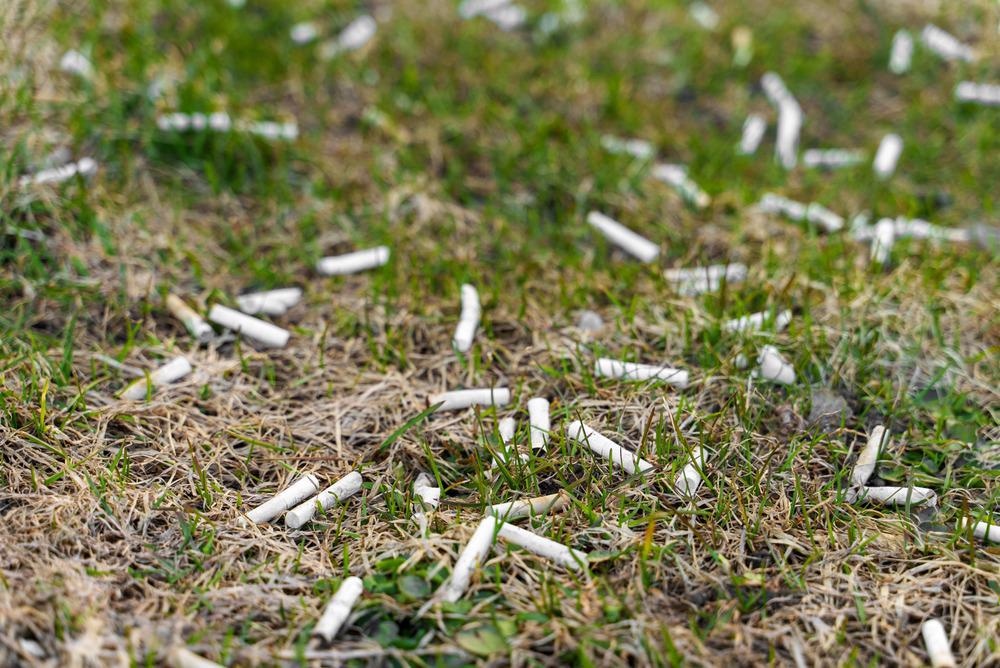The latest research in the journal Applied Polymer Science by researchers in Xi’an, China, is done by fabricating a novel type of cellulose foam by utilization of waste cigarette filters.

Study: Construction of novel regenerated cellulose-based foam derived from waste cigarette filters as effective oil adsorbent. Image Credit: M-Production/Shutterstock.com
Importance of Cellulose-Based Foam
The latest study reveals that lightweight and high porosity makes cellulose-based foams and aerogels the best possible choice. Along with this, such foams have been widely utilized in adsorption, electrode material fabrication, electromagnetic interference shielding, oil and water insulation, and thermal insulation.
Because of their low density and biodegradability, cellulose foams and aerogels have been regarded as ideal scaffolds for a variety of applications.
Recently, the logical design and manufacturing of cellulose-based composite foams and aerogels for energy storage devices have received a lot of attention, and they are becoming a hot zone in the development of sustainable electrode materials.
In terms of durability and biodegradability, cellulose is the best choice to use in the construction of these porous structures. Thus, cellulose aerogels and foams can be employed as a viable choice for the degradation of organic pollutants in wastewater.
Sources of Cellulose Acetate
Transforming waste products to useful commodities is a trending topic across the world, and it may significantly lessen the burden of garbage disposal.
The majority of raw materials obtained from waste goods are cellulose from nature. Cellulose acetate is a significant cellulose precursor, and the most prevalent cellulose acetate product in our daily lives is discarded cigarette filters.
It is critical to create a sustainable strategy for immediately converting used cigarette filters into cellulose foams. The study in the journal Applied Polymer Science teaches us that the inherent properties of waste cellulose matrix materials are critical in the construction of a stably functioning composite.
Research Findings
The research involved the use of waste cigarette filters which were cut by a high-speed shearing machine and dissolved in urea/NaOH solution for a night at -18 degrees. The cellulose material sources were polyvinyl alcohol (PVL) and MTMS substances. The research findings indicate that these synthesized composite foams have a low weight and high porosity, making them equivalent to natural cellulose-based aerogels and/or foams.
Observation of Molecular Structure
A sheet-like layered fiber structure was observed for the composites, and these fibers were interconnected, which is the core reason for their porosity. Now, if the density is increased, a greater number of molecules are compacted in a small space, fibers come closer to one another, and the number of pores on the surface of composites decreases rapidly.
Another important revelation was the weight loss at higher temperatures. It occurs due to the decomposition of water molecules between the temperatures of 200 °C - 340 °C.
Various samples were created with different PVA constituent quantities.
More on Innovating with Waste: Regenerating Wood Waste with Additive Manufacturing
As mentioned above the researchers performed experiments such as investigation of surface and molecular properties and geometry, thermal stability analysis, and pore size evaluation. It was found that the PVA-60% concentration sample was the one with the optimum porosity and overall optimized properties. The selected sample then went through a series of tests for a thorough assessment of oil absorption and hydrophobicity properties.
Oil Absorption Analysis
The PVA-60% sample showed improved hydrophobicity over its competitors. It was demonstrated that the foam network was effectively encased with a hydrophobic coating. Similar results were obtained for oil absorption where it showed a rapid absorption rate. It was shown that cellulose foams have superior adsorption capacity for different densities of adsorbates.
It was observed that the form floated on oil and absorbed oil faster, indicating that the composite foam can efficiently be used to clean up oil spills.
Problems Associated
The stability of such substances in wet environments is an essential problem that must be solved. The disintegration of cellulose foams in water can be prevented by crosslinking the fibers to generate water-stable structures. Polycarboxylic acids can be utilized to improve the water stability of polysaccharide-based products.
The researchers successfully synthesized a novel PVA-based cellulose sample from waste cigarette filters. The synthesized sample after a series of extensive tests exhibited a low-weight porous structure with exceptional oil absorption capacity. After suitable coating, the hydrophobicity of the foam could also be rapidly increased.
However, the prepared foams surpass all the basic required characteristics and could efficiently be used as an absorbent for oil treatment purposes.
References
Zhang, Q., Cheng, Y., Fang, C., & Shi, J. (2021). Construction of novel regenerated cellulose-based foam derived from waste cigarette filters as effective oil adsorbent. Applied Polymer Science. https://onlinelibrary.wiley.com/doi/abs/10.1002/app.51900
Disclaimer: The views expressed here are those of the author expressed in their private capacity and do not necessarily represent the views of AZoM.com Limited T/A AZoNetwork the owner and operator of this website. This disclaimer forms part of the Terms and conditions of use of this website.